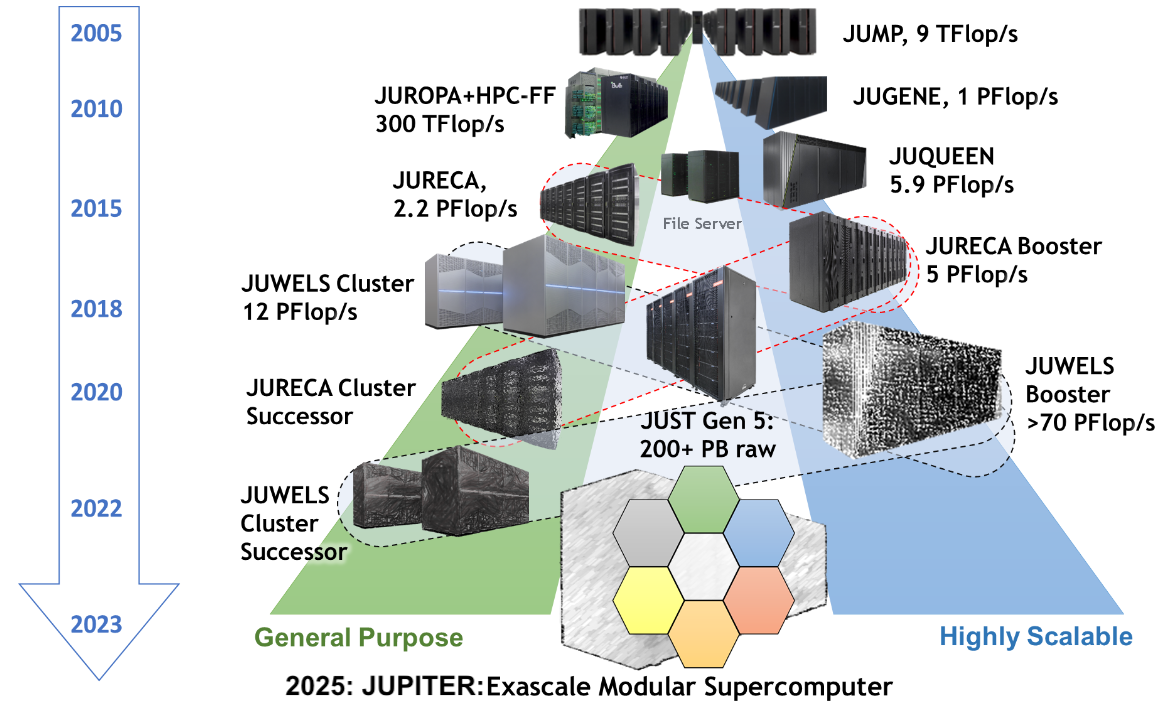Bringing Deep Learning Workloads to JSC supercomputers
Data loading
Alexandre Strube // Sabrina Benassou
September 18, 2024
Schedule for day 2
| Time | Title |
|---|---|
| 10:00 - 10:15 | Welcome, questions |
| 10:15 - 11:30 | Data loading |
| 11:30 - 12:00 | Coffee Break (flexible) |
| 12:30 - 14:00 | Parallelize Training |
Let’s talk about DATA
- Some general considerations one should have in mind

I/O is separate and shared
All compute nodes of all supercomputers see the same files
- Performance tradeoff between shared acessibility and speed
- It’s simple to load data fast to 1 or 2 gpus. But to 100? 1000? 10000?
Jülich Supercomputers
- Our I/O server is almost a supercomputer by itself
![JSC Supercomputer Stragegy]()
JSC Supercomputer Stragegy
Where do I keep my files?
$PROJECT_projectnamefor code (projectnameistraining2434in this case)- Most of your work should stay here
$DATA_projectnamefor big data(*)- Permanent location for big datasets
$SCRATCH_projectnamefor temporary files (fast, but not permanent)- Files are deleted after 90 days untouched
Data services
- JSC provides different data services
- Data projects give massive amounts of storage
- We use it for ML datasets. Join the project at Judoor
- After being approved, connect to the supercomputer and try it:
Data Staging
- LARGEDATA
filesystem is not accessible by compute nodes
- Copy files to an accessible filesystem BEFORE working
- Imagenet-21K copy alone takes 21+ minutes to
$SCRATCH
- We already copied it to $SCRATCH for you
Data loading

Strategies
- We have CPUs and lots of memory - let’s use them
- multitask training and data loading for the next batch
/dev/shmis a filesystem on ram - ultra fast ⚡️
- Use big files made for parallel computing
- HDF5, Zarr, mmap() in a parallel fs, LMDB
- Use specialized data loading libraries
- FFCV, DALI, Apache Arrow
- Compression sush as squashfs
- data transfer can be slower than decompression (must be checked case by case)
- Beneficial in cases where numerous small files are at hand.
Libraries
- Apache Arrow https://arrow.apache.org/
- FFCV https://github.com/libffcv/ffcv and FFCV for PyTorch-Lightning
- Nvidia’s DALI https://developer.nvidia.com/dali
We need to download some code
The ImageNet dataset
Large Scale Visual Recognition Challenge (ILSVRC)
- An image dataset organized according to the WordNet hierarchy.
- Extensively used in algorithms for object detection and image classification at large scale.
- It has 1000 classes, that comprises 1.2 million images for training, and 50,000 images for the validation set.
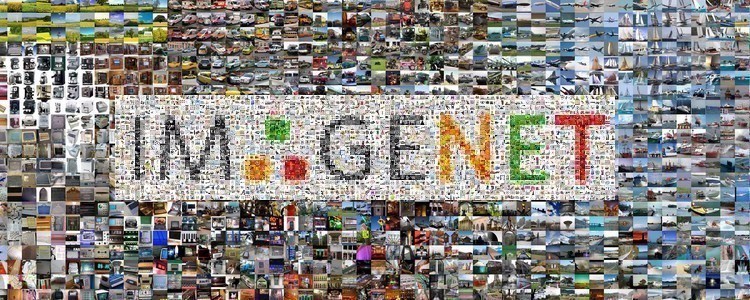
The ImageNet dataset
ILSVRC
|-- Data/
`-- CLS-LOC
|-- test
|-- train
| |-- n01440764
| | |-- n01440764_10026.JPEG
| | |-- n01440764_10027.JPEG
| | |-- n01440764_10029.JPEG
| |-- n01695060
| | |-- n01695060_10009.JPEG
| | |-- n01695060_10022.JPEG
| | |-- n01695060_10028.JPEG
| | |-- ...
| |...
|-- val
|-- ILSVRC2012_val_00000001.JPEG
|-- ILSVRC2012_val_00016668.JPEG
|-- ILSVRC2012_val_00033335.JPEG
|-- ...The ImageNet dataset
imagenet_train.pkl
{
'ILSVRC/Data/CLS-LOC/train/n03146219/n03146219_8050.JPEG': 524,
'ILSVRC/Data/CLS-LOC/train/n03146219/n03146219_12728.JPEG': 524,
'ILSVRC/Data/CLS-LOC/train/n03146219/n03146219_9736.JPEG': 524,
...
'ILSVRC/Data/CLS-LOC/train/n03146219/n03146219_7460.JPEG': 524,
...
}imagenet_val.pkl
Access File System
Inodes
- Inodes (Index Nodes) are data structures that store metadata about files and directories.
- Unique identification of files and directories within the file system.
- Efficient management and retrieval of file metadata.
- Essential for file operations like opening, reading, and writing.
- Limitations:
- Fixed Number: Limited number of inodes; no new files if exhausted, even with free disk space.
- Space Consumption: Inodes consume
disk space, balancing is needed for efficiency.
![]()
Pyarrow File Creation

Pyarrow File Creation

Pyarrow File Creation

Pyarrow File Creation

Pyarrow File Creation
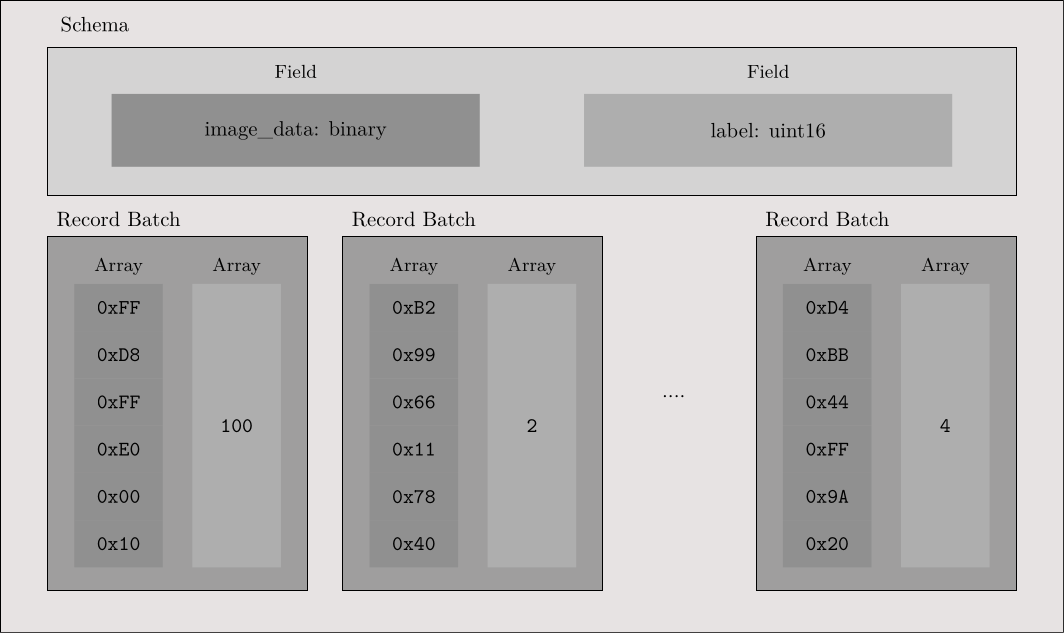
Access Arrow File

def __getitem__(self, idx):
if self.arrowfile is None:
self.arrowfile = pa.OSFile(self.data_root, 'rb')
self.reader = pa.ipc.open_file(self.arrowfile)
row = self.reader.get_batch(idx)
img_string = row['image_data'][0].as_py()
target = row['label'][0].as_py()
with io.BytesIO(img_string) as byte_stream:
with Image.open(byte_stream) as img:
img = img.convert("RGB")
if self.transform:
img = self.transform(img)
return img, targetHDF5

HDF5
HDF5
HDF5
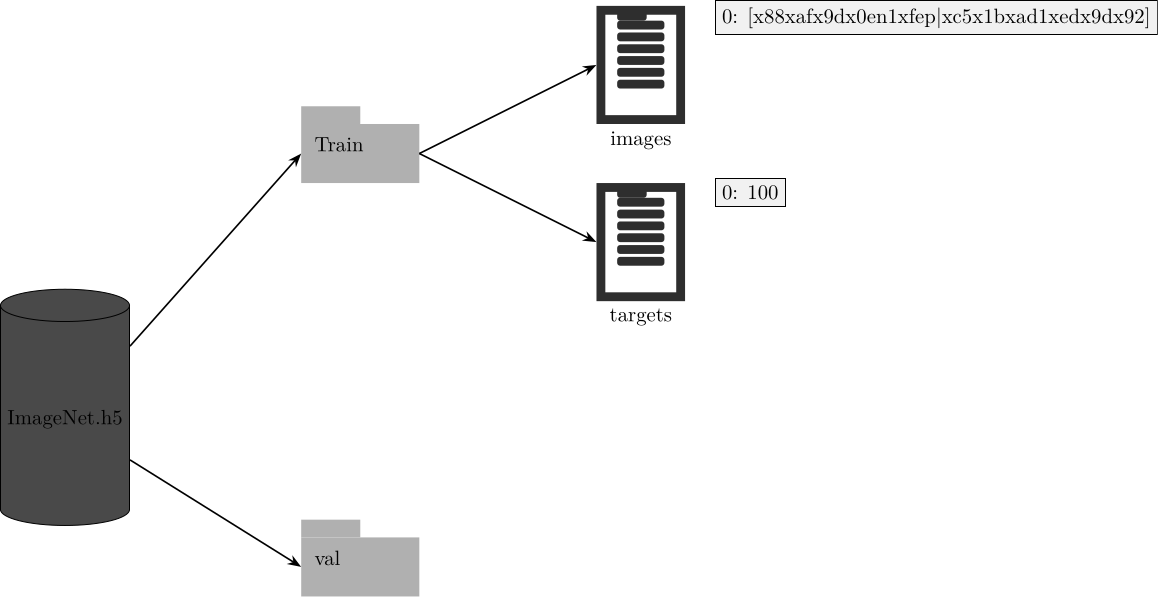
HDF5
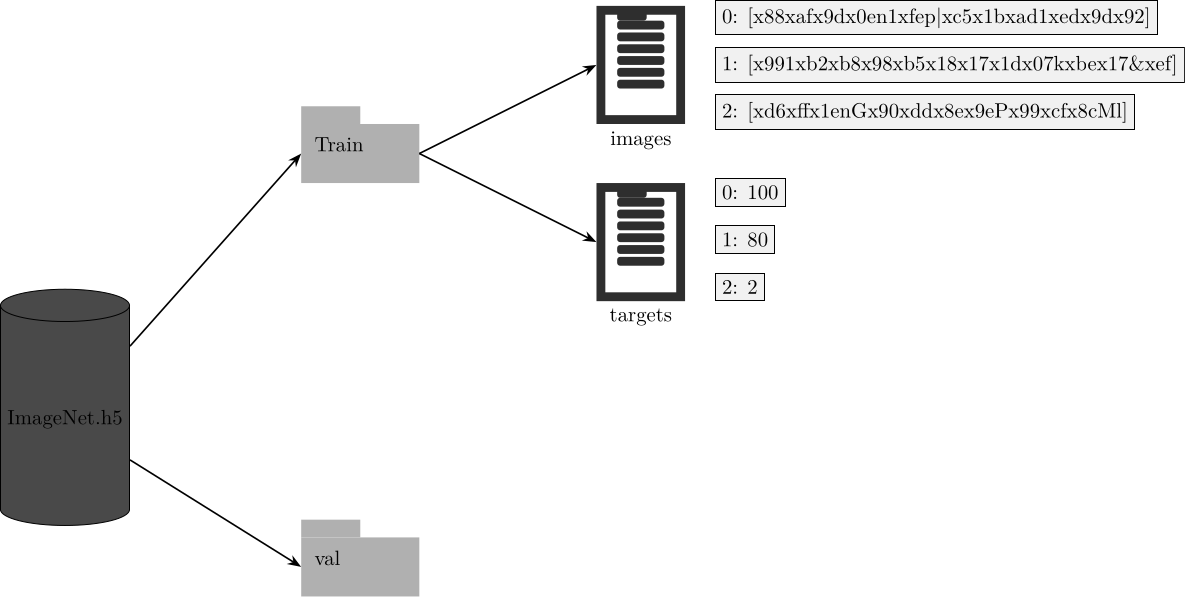
HDF5
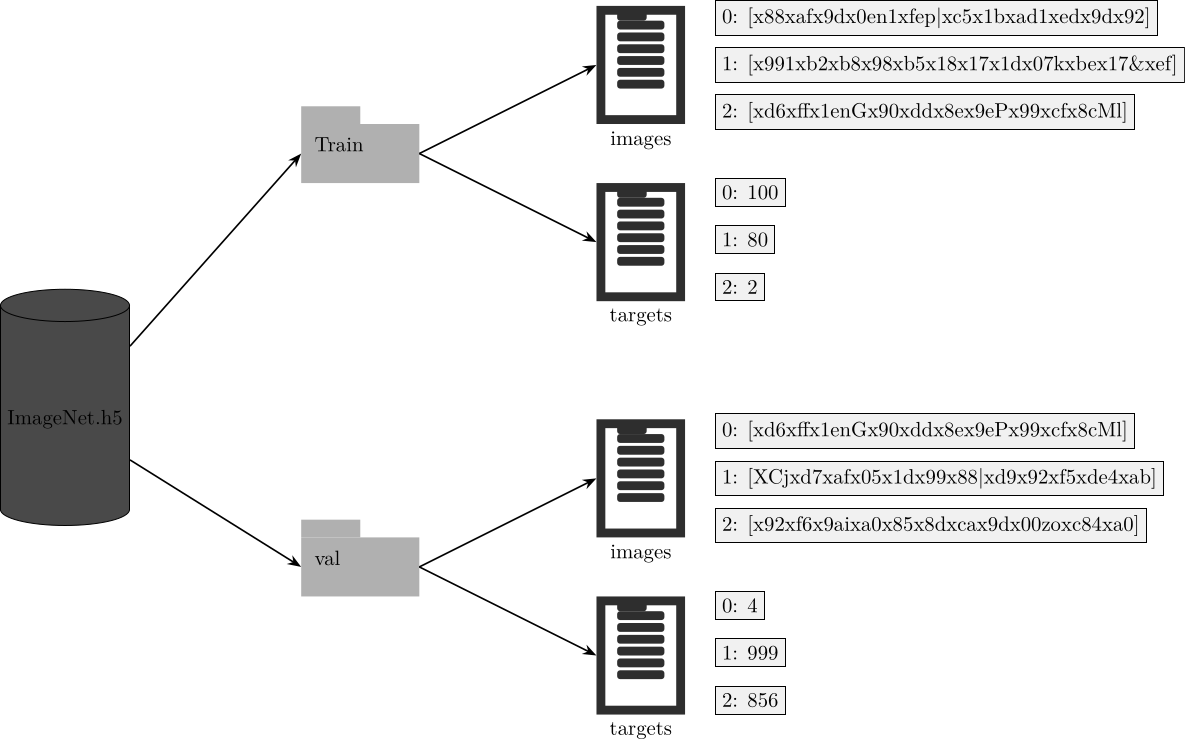
Access h5 File
def __getitem__(self, idx):
if self.h5file is None:
self.h5file = h5py.File(self.train_data_path, 'r')[self.split]
self.imgs = self.h5file["images"]
self.targets = self.h5file["targets"]
img_string = self.imgs[idx]
target = self.targets[idx]
with io.BytesIO(img_string) as byte_stream:
with Image.open(byte_stream) as img:
img = img.convert("RGB")
if self.transform:
img = self.transform(img)
return img, targetDEMO
Exercise
- Could you create an arrow file for the flickr
dataset stored in
/p/scratch/training2434/data/Flickr30K/and read it using a dataloader ?
